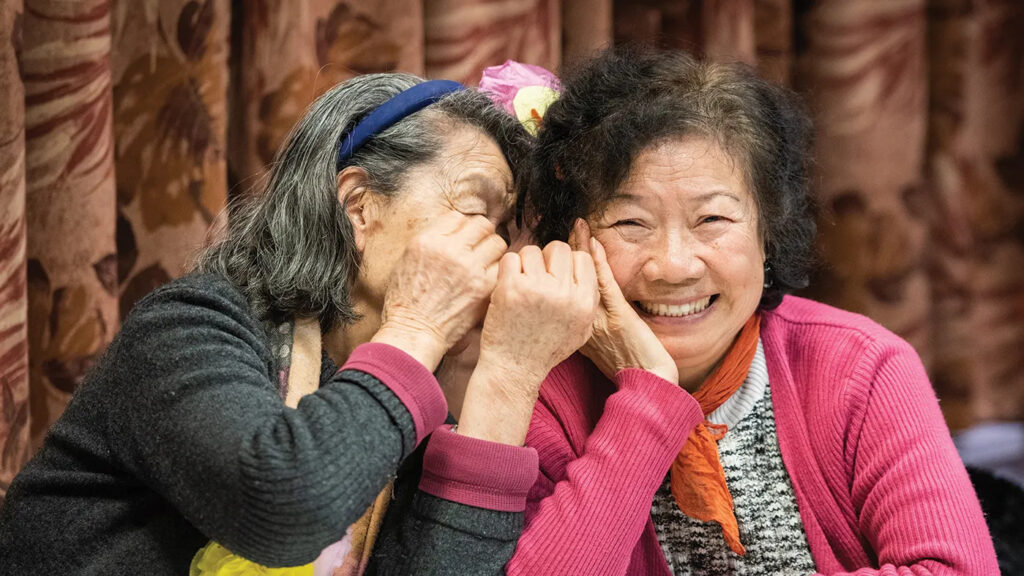Home » Understance Shelters: Downtown Eastside Women’s Center
Understance Shelters: Downtown Eastside Women’s Center
This holiday season, we’re partnering with two amazing charities that provide shelter and warm meals for the homeless. We asked the Downtown Eastside Women’s Centre to share some information about their services and ways you help support them this season.

All About the Organization
How does your organization define homelessness? What types of homelessness do you address?
We define homelessness as being without stable housing. Being homeless can take many forms including living in shelters, living on the street, or couch surfing between homes.
Tell us about the types of services you provide and the services you hope to provide in the future.
Creating and maintaining a low-barrier safe space for all women is our priority, particularly for the women who survive with complex trauma, mental health, and/or addiction issues. The Downtown Eastside Women’s Centre (DEWC) provides safe, non-judgmental environments for women from all walks of life, who live and/or work in Vancouver’s Downtown Eastside (DTES). The Centre provides supportive surroundings with meals, counseling, advocacy, and programs which nurture and empower members. Located in one of Canada’s poorest urban neighborhoods, we strive to provide refuge to over 750 women daily, through drop-in and shelter services, providing trauma-informed, compassionate care, with low-barrier operations 24 hours daily, 365 days a year. DEWC has been providing a place of safety with basic needs and positive change for women and children in the DTES since 1978.
Who are the people you serve primarily and that are facing homelessness?
We support a diverse population including Indigenous women (70% of women accessing services), Chinese senior women, single mothers, cis and transgender women; and women with disabilities, addictions, and mental and/or physical health conditions. What women have in common is a lack of adequate income, precarious housing situations or chronic homelessness, lack of access to health supports, and experiences with high levels of violence and racism.
Where does most of your funding come from and does your current funding meet the demand for your services?
Our funding primarily comes from donors and grants. Due to the pandemic, we have seen a huge uptick in the demand for our services and as a result, we are always in need of more funding. For example, our 100% donor-funded meals program is one of the most valuable services we offer, yet is the most underfunded.
Do your services and the needs differ during the winter and holiday season?
Yes. The cold weather months are some of the most precarious for vulnerable or unhoused people in the community. We see a lot of people coming in for warm meals, comfortable winter clothing, or just a warm safe space to connect with their peers.
Homelessness During Winter
What is the biggest challenge facing the people you serve during the holiday and winter season?
Both physical and mental health challenges. Due to the cold weather, many members of the community need a warm safe space to go, along with cold weather supplies like warm clothes. There are also many people dealing with mental health issues-isolation and loneliness. Of course, there’s also the overdose crisis, we see that year-round but the pandemic has definitely exacerbated the crisis.
What are the immediate needs that your organization is looking to fulfill currently?
Our priority is always to ensure that basic needs are met for the women in our community, things like food, clothing, and housing. We also provide a wide range of services to help with mental health challenges, including advocacy and victim services.
What are some common misconceptions that people have about homelessness? (For example, I read a study that a lot of people facing homelessness have suffered from traumatic brain injury)
I think a big issue is people making assumptions about people experiencing homelessness, and stigma in society in general. Some people just assume that it’s the person’s fault that they are homeless, that they are lazy, or dealing with addiction or violence. That is just not true. Poverty and homelessness are complex issues and every case is different. Lots of people in the community are dealing with complex and/or intergenerational trauma. Addiction is definitely prominent in the community, but not everyone deals with it. There are so many stigmas around individuals experiencing homelessness that sometimes people fail to look at the system as a whole.
What are some of the impacts of homelessness that people may not be aware of?
Isolation is a big one. People who are unhoused may be hesitant to access services, and as a result, are isolated from the community. There is also gender-based violence. Women and gender-diverse folks, especially people of colour, are far more likely to be victims of violence than any other group.
Other Information
Can you share any success stories or anecdotes about how your services have positively impacted the lives of a resident of your shelters?
We consider any woman who accesses our services and has her needs met to be a success story. Right now we see around 750 women a day, all with their own complex lives and needs. If we can help them in any way, that is a success.
What are the best ways for individuals and businesses to support your organization this holiday season and beyond?
Donating to the organization to help fund our programs is always needed. COVID had a big impact on the non-profit sector and the need for our services has never been greater.
